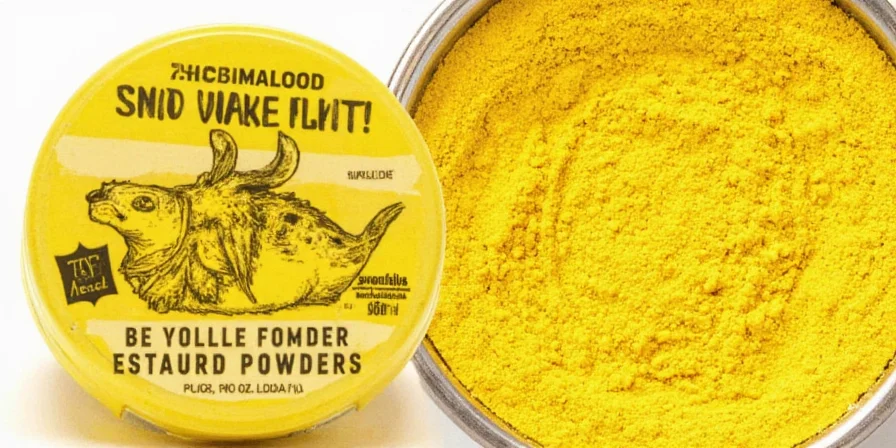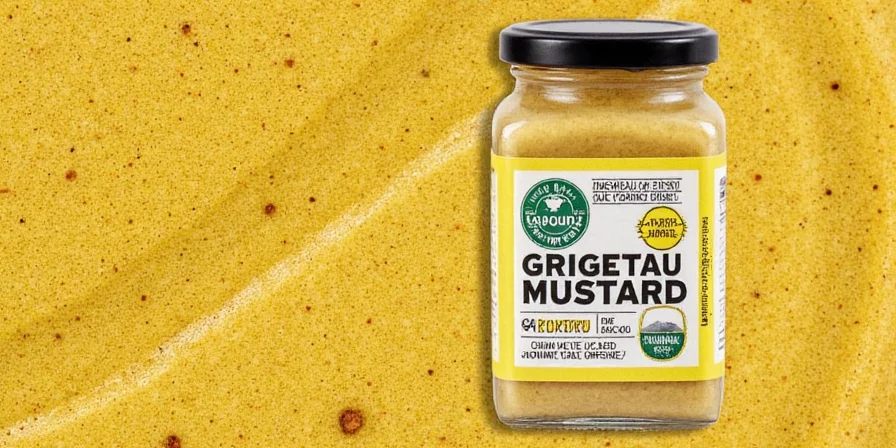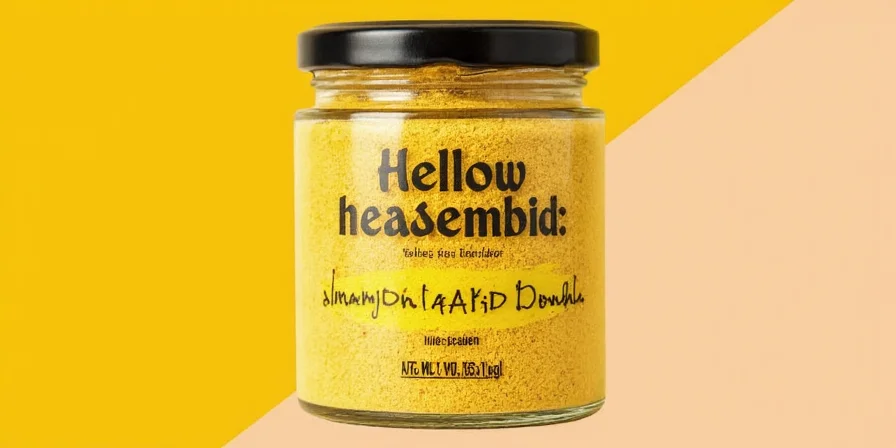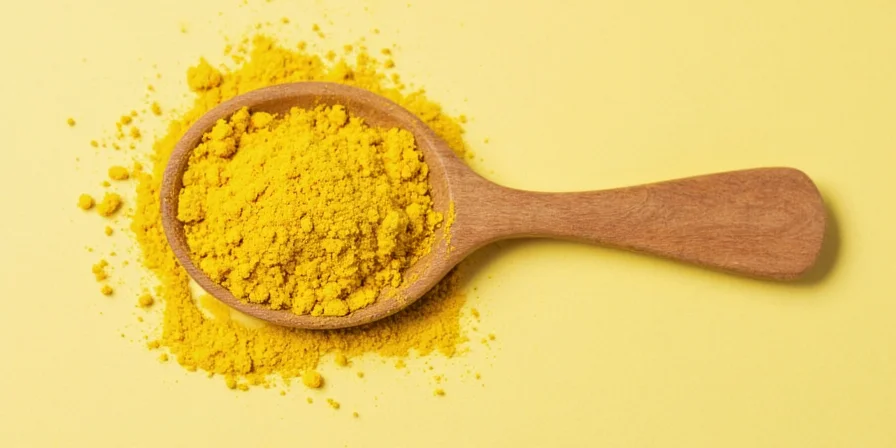Table of Contents
- Introduction: What You Need to Know About Yellow Mustard Powder
- What Is Yellow Mustard Powder? Simple Definition and Key Facts
- Yellow Mustard Powder Substitutes: Practical Swaps When You're Out
- Flavor Profile and How It Differs from Other Mustards
- 5 Practical Ways to Use Yellow Mustard Powder in Everyday Cooking
- Storage Tips: Keep It Fresh for Maximum Flavor
- Mustard Comparison: Yellow Powder vs. Other Varieties
- Easy Kitchen Hacks with Yellow Mustard Powder
- Health Benefits: What You Should Know
- Frequently Asked Questions
- Conclusion: Make the Most of This Pantry Staple
Introduction: What You Need to Know About Yellow Mustard Powder
Yellow mustard powder is one of the most versatile pantry staples you're probably underusing. Unlike prepared mustards that require refrigeration, this dry spice offers consistent flavor and long shelf life while providing the familiar tangy kick you love in classic American cooking. Whether you're looking for yellow mustard powder substitutes when yours runs out, want to know how to use it in everyday recipes, or need practical storage advice, this guide delivers exactly what home cooks need—no unnecessary scientific jargon, just actionable kitchen knowledge that works.

What Is Yellow Mustard Powder? Simple Definition and Key Facts
Yellow mustard powder comes from finely ground yellow mustard seeds (Brassica hirta or Sinapis alba). It's the key ingredient that gives classic American yellow mustard its bright color and mild tang. Unlike prepared mustards that contain vinegar and water, the powder form offers concentrated flavor you can control by adjusting liquid ratios. This makes it perfect for dry rubs, spice blends, and recipes where you want mustard flavor without added moisture.
Yellow Mustard Powder Substitutes: Practical Swaps When You're Out
Running out of yellow mustard powder doesn't have to stop your cooking. Here are the best substitutions with proper ratios:
| Ingredient You Have | Substitution Ratio | Best For | Flavor Adjustment Tip |
|---|---|---|---|
| Yellow Prepared Mustard | 1 tbsp mustard = 1 tsp powder + 2 tsp liquid | Marinades, dressings | Reduce other liquids by 2 tsp |
| Dijon Mustard | 1 tbsp Dijon = 1 tsp powder + 1 tsp white wine | Creamy sauces, cheese dishes | Add 1/8 tsp sugar to mellow sharpness |
| White Vinegar + Turmeric | 1 tsp vinegar + 1/8 tsp turmeric = 1 tsp powder | Pickling, salad dressings | Add pinch of paprika for depth |
| Horseradish Powder | 1/2 tsp horseradish = 1 tsp mustard powder | Meat glazes, cocktail sauces | Add 1/4 tsp sugar to balance heat |

Flavor Profile and How It Differs from Other Mustards
Understanding how yellow mustard powder compares to other varieties helps you choose the right one for your recipe:
| Type | Heat Level | Flavor Characteristics | Best Home Kitchen Uses |
|---|---|---|---|
| Yellow Mustard Powder | Mild | Subtle tang, earthy, bright yellow color | Dry rubs, pickling, cheese sauces, baked goods |
| Dijon Mustard | Moderate | Sharp, wine-vinegar tang, smooth texture | Salad dressings, pan sauces, sandwich spreads |
| Whole Grain Mustard | Moderate | Complex, nutty, visible seeds | Charcuterie boards, roasted meats, potato salads |
| Honey Mustard | Mild | Sweet-tangy, smooth | Dips, chicken tenders, glazes |
5 Practical Ways to Use Yellow Mustard Powder in Everyday Cooking
- Perfect Pickling Boost: Add 1 teaspoon to your vinegar brine for refrigerator pickles—enhances flavor without overpowering vegetables.
- Dry Rub Essential: Mix with paprika, brown sugar, and garlic powder (2:2:1:1 ratio) for a versatile meat rub that creates beautiful crusts.
- Dressing Stabilizer: Whisk 1/4 teaspoon into vinaigrettes before adding oil to prevent separation—works like a charm for homemade dressings.
- Better Baked Goods: Add to cornbread, cheese biscuits, or savory scones (1/2 teaspoon per cup of flour) for subtle depth.
- Meat Tenderizing Trick: Combine with salt in marinades (1:4 ratio) to help break down proteins for more tender results.

Storage Tips: Keep It Fresh for Maximum Flavor
Proper storage ensures your yellow mustard powder delivers consistent flavor:
- Store in an airtight container away from light and heat—kitchen cabinets work well if not next to the stove.
- Refrigeration isn't necessary but extends shelf life to 2-3 years (vs. 1-2 years at room temperature).
- Test freshness by mixing 1/4 teaspoon with warm water—if it develops tangy flavor within 2 minutes, it's still good.
- Avoid storing near strong-smelling spices like garlic powder, as mustard powder can absorb odors.
Mustard Comparison: Yellow Powder vs. Other Varieties
Here's how yellow mustard powder stacks up against other common mustard forms for home cooking:
| Characteristic | Yellow Mustard Powder | Prepared Yellow Mustard | Dijon Mustard |
|---|---|---|---|
| Shelf Life | 1-2 years unopened, 6-12 months opened | 1 year unopened, 2-3 months refrigerated after opening | 1-2 years unopened, 6-12 months refrigerated after opening |
| Flavor Control | High—adjust liquid ratios to control intensity | Fixed flavor profile | Fixed flavor profile |
| Best for Dry Applications | Ideal for rubs, spice blends, baking | Not suitable | Not suitable |
| Acidity Level | Neutral until activated with liquid | High (vinegar-based) | High (wine vinegar) |
Easy Kitchen Hacks with Yellow Mustard Powder
- Fix Broken Mayo: Add 1/8 teaspoon to separated mayonnaise while whisking—it helps re-emulsify within 30 seconds.
- Better Gravy: Whisk 1/2 teaspoon into pan drippings before adding flour for enhanced flavor in meat gravies.
- Popcorn Upgrade: Mix with melted butter, salt, and a pinch of cayenne for restaurant-quality flavored popcorn.
- Cheese Sauce Secret: Add to mac and cheese (1/4 teaspoon per cup of cheese) to prevent clumping and enhance flavor.
- Marinade Extender: Add to yogurt-based marinades (1/2 teaspoon per cup) to help flavors penetrate deeper into meats.

Health Benefits: What You Should Know
While not a health supplement, yellow mustard powder offers some benefits as part of a balanced diet:
- Contains selenium and magnesium, minerals important for metabolic health.
- Naturally low in calories—about 5 calories per teaspoon with no sugar or fat.
- May aid digestion as part of balanced meals—mustard has been used traditionally to stimulate appetite.
- Can help reduce sodium in recipes by providing flavor complexity that makes food taste seasoned with less salt.
Frequently Asked Questions
Can I use yellow mustard powder instead of prepared mustard?
Yes—mix 1 teaspoon powder with 1 tablespoon water or vinegar to replace 1 tablespoon prepared mustard. For dressings, add the powder directly to oil first before adding vinegar for better emulsification.
Why does my mustard-spiced dish taste bitter?
Bitterness usually happens when mustard powder is exposed to high heat before proper hydration. Always mix with cold liquid first and let sit for 5 minutes before heating. Avoid temperatures above 140°F (60°C) for best flavor.
Is yellow mustard powder gluten-free?
Pure yellow mustard powder is naturally gluten-free. However, some commercial blends contain anti-caking agents that may include gluten. Look for certified gluten-free labels if you have sensitivities.
How much yellow mustard powder equals one teaspoon of prepared mustard?
Use 1/4 teaspoon yellow mustard powder plus 3/4 teaspoon liquid (water or vinegar) to replace 1 teaspoon of prepared mustard. For stronger flavor, use a full 1:1 ratio of powder to liquid.
Can I use mustard powder in sweet recipes?
Absolutely—it adds complexity to sweet applications. Try 1/8 teaspoon in caramel sauces or gingerbread recipes to enhance other spices without noticeable heat. Professional bakers often use it in honey cakes for depth of flavor.
Conclusion: Make the Most of This Pantry Staple
Yellow mustard powder deserves a permanent spot in your spice collection for its versatility, long shelf life, and ability to enhance everyday cooking. Unlike prepared mustards that eventually spoil, the powder form gives you consistent flavor whenever you need it—perfect for dry rubs, pickling, and recipes where you want precise control over moisture content. By understanding how to substitute it properly and use it in practical kitchen applications, you'll discover why this humble spice has remained a cooking essential for generations. Keep a small container in your spice rack and reach for it whenever you want to add that familiar tangy depth to your dishes without opening another bottle of prepared mustard.
Whether you're making barbecue rubs, salad dressings, or even baked goods, yellow mustard powder offers simple solutions for common cooking challenges. Now that you know exactly how to use it, store it, and substitute for it, you're ready to make the most of this kitchen essential.










 浙公网安备
33010002000092号
浙公网安备
33010002000092号 浙B2-20120091-4
浙B2-20120091-4